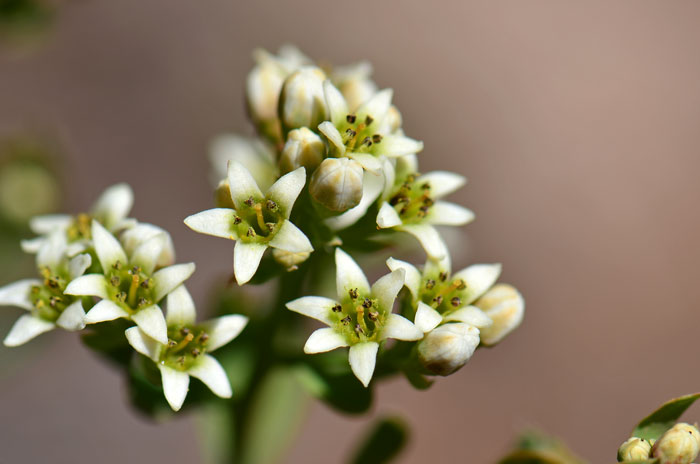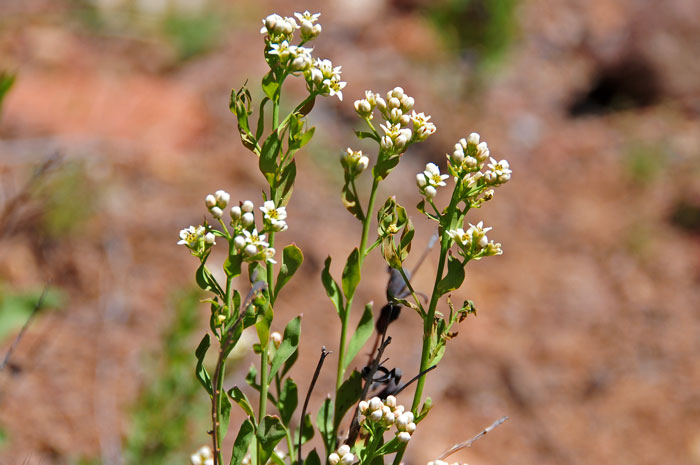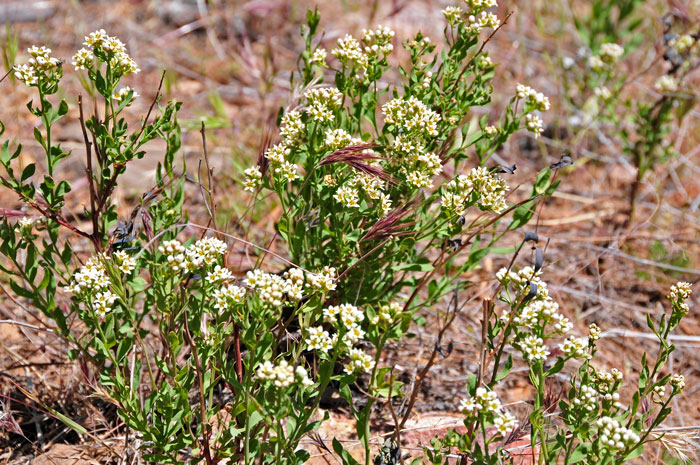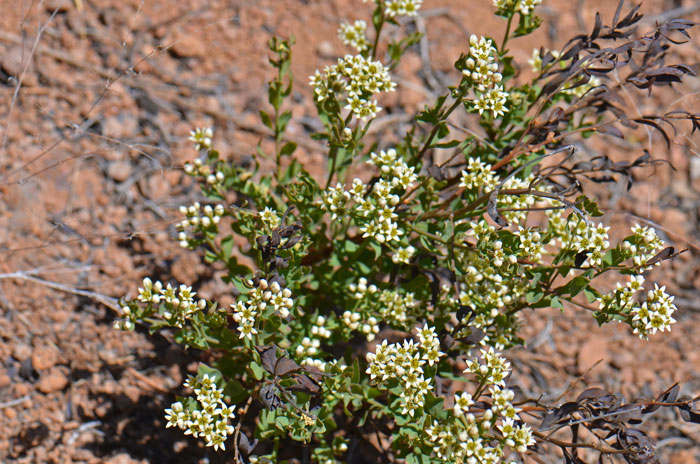Comandra umbellata, Bastard Toadflax




Scientific Name: Comandra umbellata
Common Name: Bastard Toadflax
Also Called:
Family: Santalaceae or Sandalwood Family
Synonyms: (Comandra umbellata var. umbellata)
Status: Native
Duration: Perennial
Size: Up to 15 inches or so.
Growth Form: Forb/herb, shrub; stems from rhizomes, root-parasitic plants, leafy and branched.
Leaves: Green; alternate; lanceolate, may be paler below (abaxial).
Flower Color: White or greenish-white; terminal corymbose clusters, funnel-shaped flowers; flowers perfect; sepals narrow or lanceolate; fruit is nut-like, indehiscent, 1-seeded.
Flowering Season: April to August in Arizona and California.
Elevation: 4,000 to 9,500 feet; lower elevations in California 1,000 upward 9,500 feet.
Habitat Preferences: Dry rocky areas, upper desert areas, pine communities.
Recorded Range: Bastard Toadflax is found throughout the United States and Canada and most of North America. It is also native to Baja California and northern Mexico. In Arizona it is found throughout most of the state with few or no records in Yuma and LaPaz counties.
North America & US County Distribution Map for Comandra umbellata.
U.S. Weed Information: No information available.
Invasive/Noxious Weed Information: No information available.
Wetland Indicator: No information available. In North America Comandra umbellata has the following wetland designations:
Alaska, FACU, UPL;
Arid West, UPL;
Atlantic and Gulf Coastal Plain, UPL;
Eastern Mountains and Piedmont, FACU;
Great Plains, UPL; Midwest, FACU;
Northcentral & Northeast, FACU;
Western Mountains, Valleys, and Coast, FACU.
FACU = Facultative Upland, usually occur in non-wetlands, but may occur in wetlands
UPL = Obligate Upland, almost never occur in wetlands.
Threatened/Endangered Information: No information available.
In the Southwestern United States, there is 1 species of Comandra. All data is approximate and subject to taxonomic changes.
There are 3 subsp. in Comandra umbellata;
Comandra umbellata subsp. californica, California Bastard Toadflax, (AZ, BC, CA, OR, NV, WA);
Comandra umbellata subsp. pallida, pale Bastard Toadflax, (above Recorded Range except CA);
Comandra umbellata subsp. umbellata, Bastard Toadflax, (E. USA, CAN).
Comments: Comandra umbellata or Bastard Toadflax is a semi-parasitic (also photosynthesizes) plant found in Arizona in upper desert area. Plants from several different families have been identified as hosts.
Comandra umbellata or Bastard Toadflax has been used for a variety of purposes by North American indigenous peoples.
Cherokee Drug, Dermatological Aid, Juice applied to cut or sore.
Meskwaki Drug, Analgesic, Infusion of leaf taken for lung pains.
Meskwaki Drug, Respiratory Aid, Medicine of immature florets licked to ease labored breathing from cold, etc.
Okanagan-Colville Food, Sweetener, Flowers sucked by children for the sweet nectar.
Arapaho Dye, Blue, Area next to the root bark used as a blue dye.
Navajo Drug, Dermatological Aid, Decoction of plant used as a foot bath for corns.
Okanagon Food, Staple, Seeds or nuts used as a principle food.
Thompson Drug, Eye Medicine, Fresh roots mixed with woman's milk and used as a wash for sore or inflamed eyes.
See all ethno-botanical uses at Native American Ethnobotany, University of Michigan, Dearborn.

